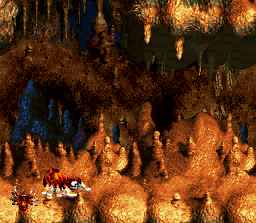

The index is measured in cans of beer, with roughly one can for every 4 inches (10 cm) of expected snowfall (the index is not perfectly linear at its lower levels as originally introduced) thus, Griffin's six-pack would be recommended for a storm bringing two feet of snow. Griffin, who in 1985 earned the nickname "Six Pack Jimmy" after suggesting residents grab a six-pack of Genesee beer to wait out an upcoming snowstorm. It is named after former Buffalo mayor James D. Television station WKBW-TV in Buffalo, New York developed the "Jimmy Griffin Snow Index" to measure the potential severity of a snowstorm. Kemp Bennett Kolb defines the distance as exactly 100 angstroms (10 nanometres), as does Nordling and Österman's Physics Handbook. It is the length an average beard grows in one second.

The beard-second is a unit of length inspired by the light-year, but applicable to extremely short distances such as those in integrated circuits. Combining it with the " atto-" prefix (×10 −18) yields attoparsec (apc), a conveniently human-scaled unit of about 3.086 centimetres (1.215 in) that is used only humorously. Parsecs are used in astronomy to measure interstellar distances. This is a reference to Houston Astros player José Altuve, who stands 5 feet 5 inches tall, making him one of the shortest players in Major League Baseball. In the sport of baseball, the Altuve is an informal measurement of distance equal to 5 feet 5 inches or 1.65 m.
#Knautilus donkey kong 3 plus
See also: Indefinite and fictitious numbers § Sagan's numberĪs a humorous tribute to Carl Sagan and his association with the catchphrase "billions and billions", a sagan has been defined as a large quantity – technically at least four billion (two billion plus two billion) – of anything. Dates before this point are referred to (perhaps tongue-in-cheek) as "B.M." ("Before MAD.") The ten "Mingoes" are: Tales (Tal.) Calculated (Cal.) To (To) Drive (Dri.) You (You) Humor (Hum.) In (In) A (A) Jugular (Jug.) Vein (Vei.) The dates are calculated from October 1, 1952, the date MAD was first published. M." (for Cowznofsko Madi, or "in the Cowznofski of our MAD"). The system also features such units as whatmeworry, cowznofski, vreeble, hoo, and hah.Īccording to the "Date" system in Knuth's article, which substitutes a 10-clarke " mingo" for a month and a 100-clarke "cowznofski", for a year, the date of Octois rendered as "Cal 7, 201 C. 31416"), and time in seven named units (decimal powers of the average earth rotation, equal to 1 " clarke"). Volume was measured in ngogn (equal to 1000 cubic potrzebies), mass in blintz (equal to the mass of 1 ngogn of halva, which is "a form of pie a specific gravity of 3.1416 and a specific heat of. According to Knuth, the basis of this new revolutionary system is the potrzebie, which equals the thickness of Mad issue 26, or 2.2633484517438173216473 mm. In issue 33, Mad published a partial table of the " Potrzebie System of Weights and Measures" developed by 19-year-old Donald E. Liquid volume is measured in gloops, and temperature in degrees Q (57 °Q is said to be the freezing point of water). Defined as the distance the king's favorite pet can run in one hour (spoofing a popular legend about the history of the foot), the length of the bloit varies dramatically, but the one canonical conversion to real-world units puts it at approximately two-thirds of a mile (1 km).

#Knautilus donkey kong 3 series
In the Zork series of games, the Great Underground Empire has its own system of measurements, the most frequently referenced of which is the bloit. The speed of light may be expressed as being roughly 1.8 terafurlongs per fortnight (or megafurlongs per microfortnight).
#Knautilus donkey kong 3 how to
Besides having the meaning of "any obscure unit", furlongs per fortnight have also served frequently in the classroom as an example on how to reduce a unit's fraction. One furlong per fortnight is very nearly 1 centimetre per minute (to within 1 part in 400). In contrast, the furlong/ firkin/ fortnight system of units of measurement draws attention by being extremely old fashioned and off-beat at the same time. Most countries use the International System of Units ( SI).


 0 kommentar(er)
0 kommentar(er)
